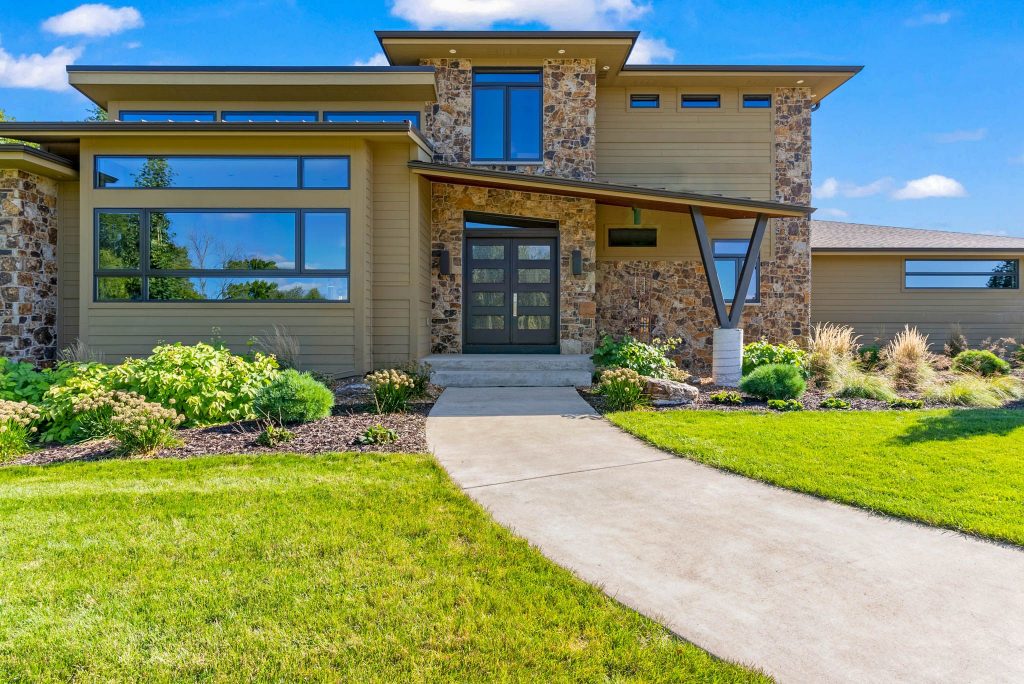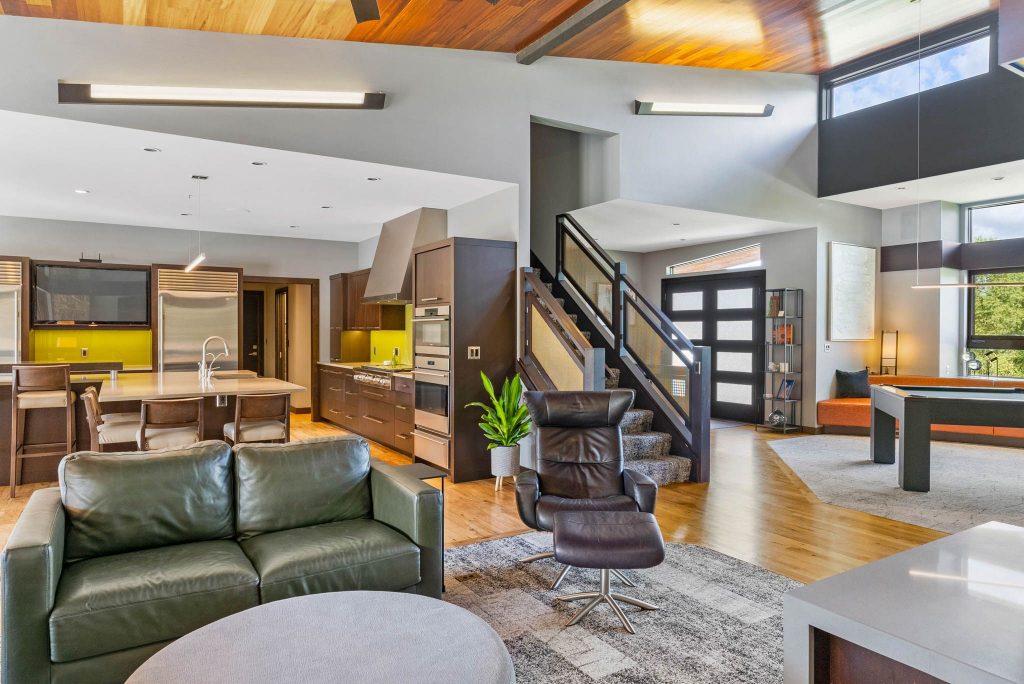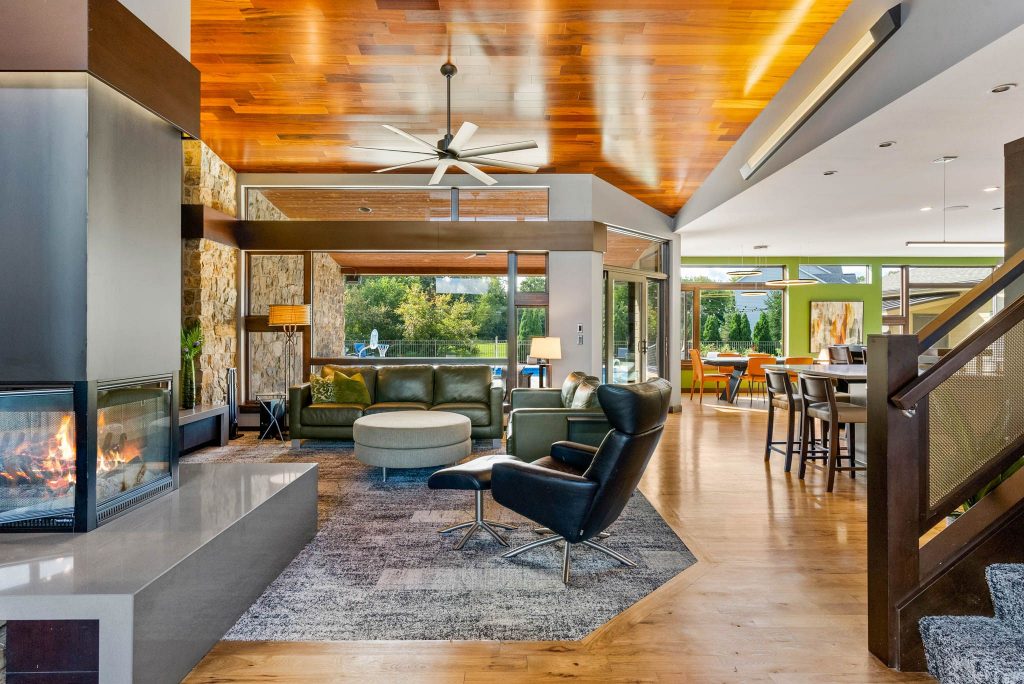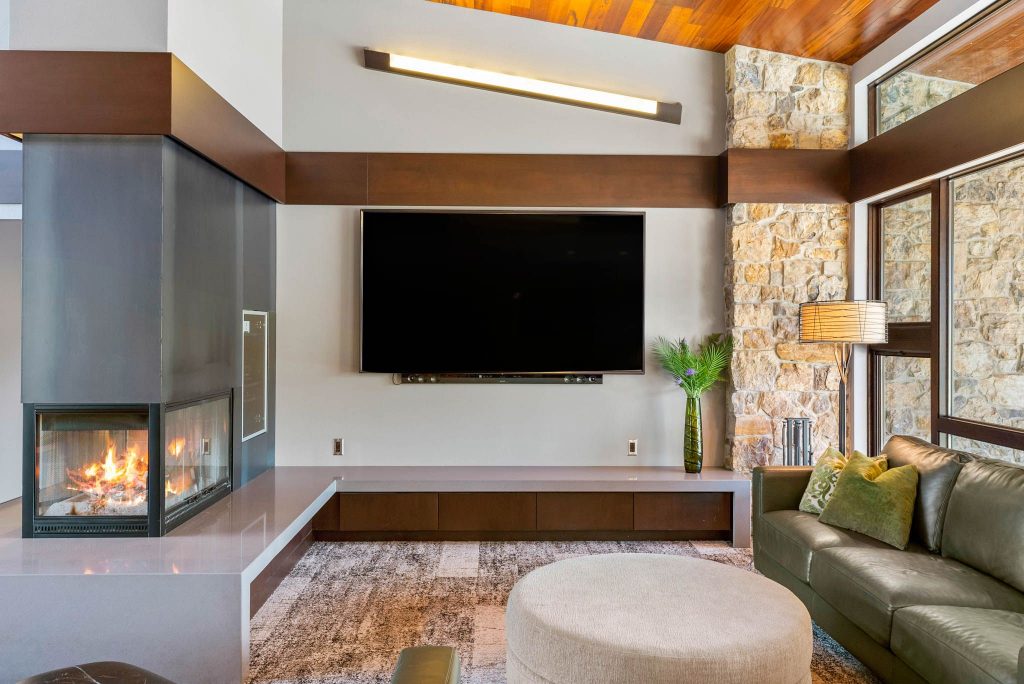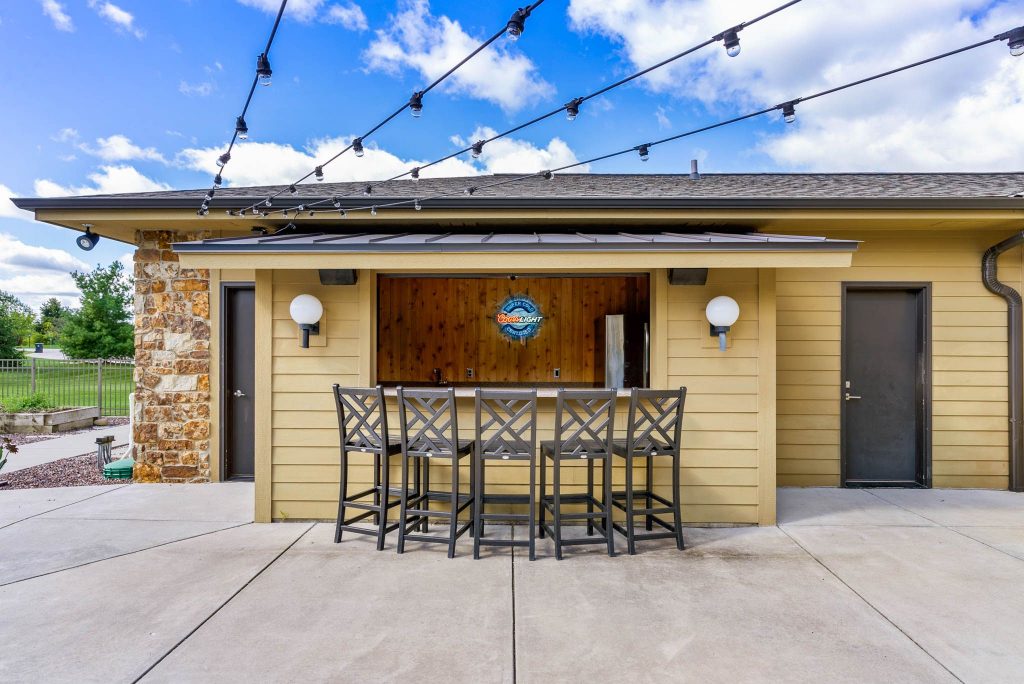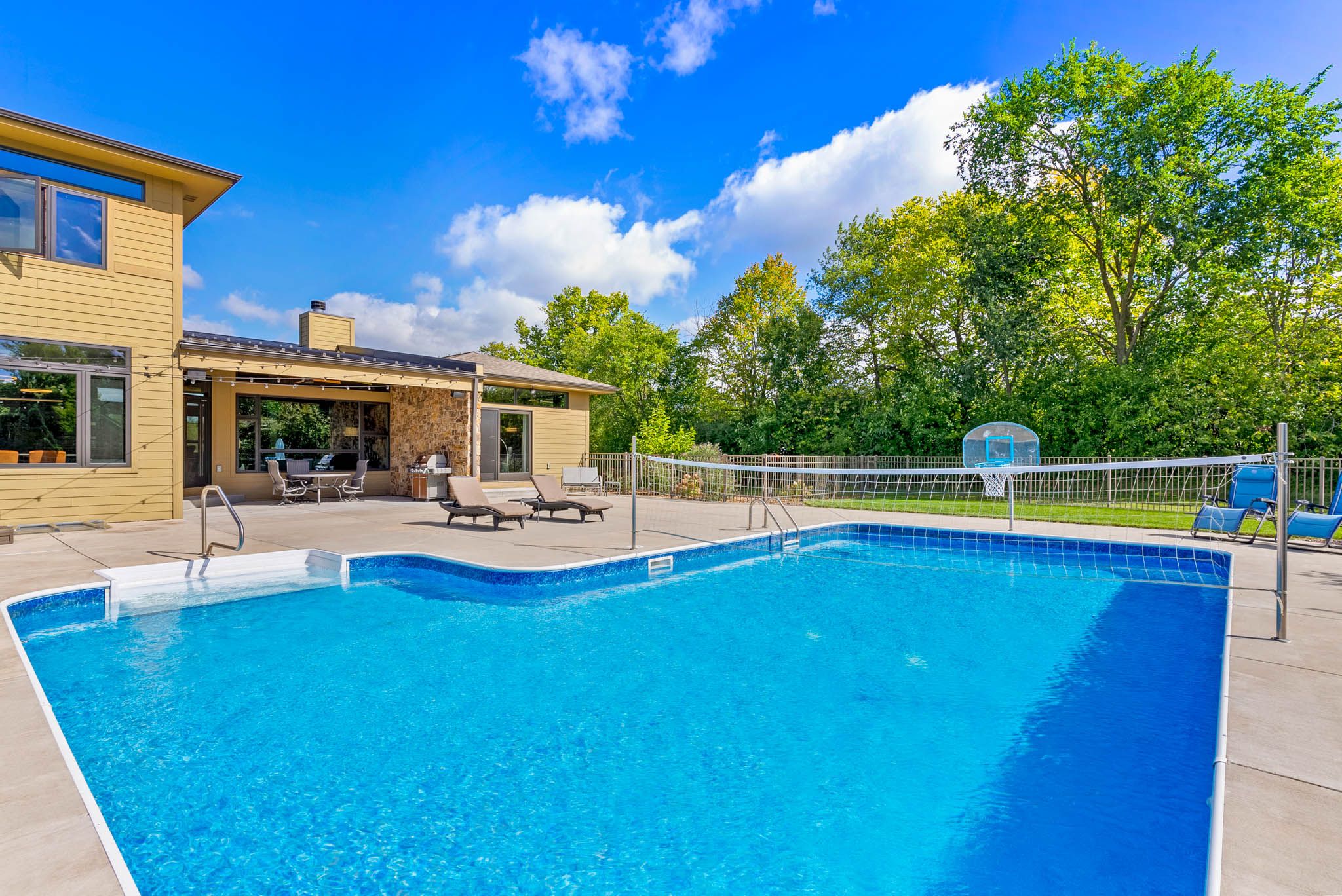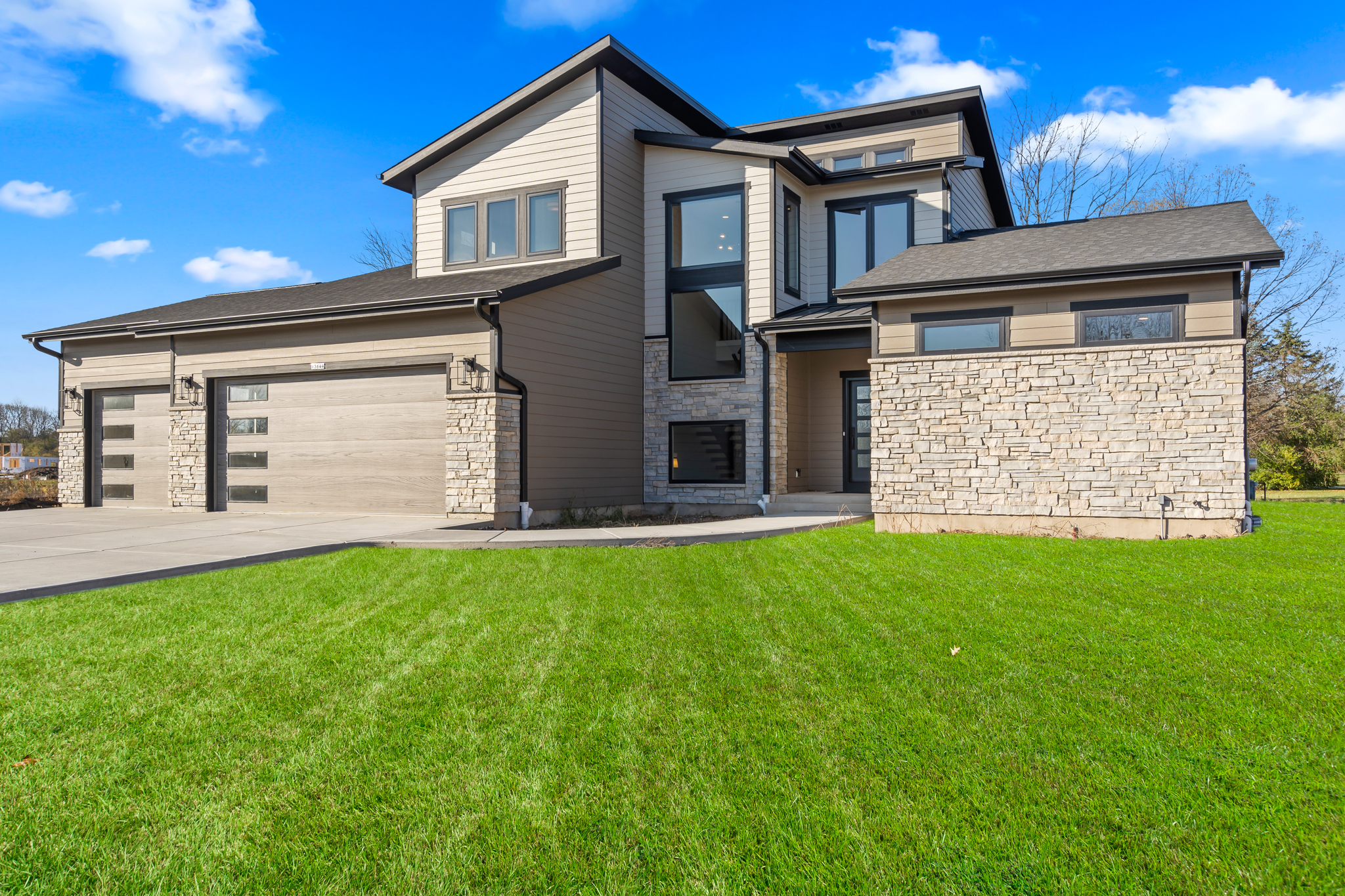Should I remodel my existing home or build a new custom home? This is a question we get asked often from homeowners looking to upgrade their living space. The answer, of course, is that it depends on your specific needs and situation.
How attached are you to your current home and location? How far off is your existing home from your dream? Are you in this situation because you need more square footage to accommodate a growing family? The important thing is to understand the difference between the two paths and determine what makes the most sense for you and your family.
There are numerous pros and cons to both a home renovation and building new. A lot of it will depend on the condition of your existing home, as well as your budget. At the end of the day, there is no wrong choice, however, there might be a better choice for your individual circumstances.
You may begin by considering renovating, only to discover that it isn’t feasible given the state of your existing home. On the other hand, you may start down the path of building new, but ultimately find that your current home can provide everything you need, it just needs a little TLC.
In this post, we will break down what to expect from both renovating your existing home and building a new home, the pros and drawbacks of each, and key considerations to take into account. By the end, you should have a much better understanding of which option is best for your specific circumstances.
Renovation and New Construction – An Overview
The first thing you need to do when deciding whether to renovate or build is to understand the difference between the two options. Renovation is defined as “the process of making changes or repairs to a property.” This can include anything from cosmetic changes to major structural changes. New construction, on the other hand, is defined as “the process of building a new home from the ground up.” This option gives you the opportunity to start with a blank slate and completely customize your new home to your exact specifications.
Usually, when people are contemplating whether to renovate their existing home or build a brand new home, this means they are planning to make major changes or additions to their property. Perhaps they want to add bedrooms or bathrooms, expand the kitchen or garage, or completely gut the home and start from scratch. In this case, it’s important to carefully consider the pros and cons of both major renovations and new construction before making a decision.
Renovation Of Your Existing Home
If you decide to renovate your existing home, you’ll need to work with what you have. This means that you may have to make some compromises in terms of the layout and finishes. For example, if you’re renovating an older home, you may have to work around existing structural elements. You may also have to deal with hidden damage or repairs that need to be made.
That being said, there are some major advantages to renovating your existing home. One of the biggest benefits is that you won’t have to go through the hassle and expense of building a new home from scratch. You’ll also be able to keep your existing home’s character and charm, which is something that’s hard to replicate in a new construction home.
Benefits of Renovating Your Existing Home
There are a few key advantages to renovating your existing home instead of building a new one:
- You can update your home without having to move: If you love your current home and location but you’re ready for a change, renovating is a great option. You can update your home to better suit your needs without having to deal with the hassle and expense of moving.
- You can stay in the neighborhood you love: If you’re attached to your current neighborhood, renovating is a great way to stay put. You’ll be able to keep the same neighbors and school district, which can be a big plus if you have kids.
- You can add value to your home: If you plan to sell your home in the future, renovating it can be a great way to increase its value. Even smaller scale renovations can make a big difference in the resale value of your home.
- You can save money: Depending on the scope of your renovation, it may be less expensive to renovate your existing home than it would be to build a new one. This is especially true if you’re not making any major changes to the layout or structural elements of your home.
- You can make your home more energy efficient: Older homes are often less energy efficient than newer ones. If you’re looking to save money on your energy bills, you can add better insulation, upgrade your windows and doors, and make other energy-saving improvements.
- You can avoid the stress of building a new home: Building a new custom home can be a very stressful process. If you’re not up for the challenge, renovating your existing home may be a better option.
Considerations for Renovating Your Existing Home
There are also a few major things to keep in mind if you’re considering renovating your existing home:
- You may not be able to make all the changes you want: If you’re planning to make major changes to your home, you may be limited to some extent by the existing structure.
- You may have to deal with unforeseen problems: When you renovate an existing home, there’s always a chance you may run into unexpected surprises that can end up costing you more money.
- Your home may be disrupted: If you’re planning to stay in your home during construction, you may have to deal with a lot of disruptions. The noise, dust, and workers coming in and out can make it difficult and stressful to live in your home during a renovation.
- You may need to temporarily move out of your home: If you’re planning to do a major renovation and don’t want to deal with the disruptions, you may need to find a temporary place to stay during construction. This can add significant expense to your project.
The best place to start is to get in touch with a design-build firm or home renovation contractor and learn everything there is to know about the history of your house. Go into as much detail as possible about the structural integrity and identify any potential problem areas. If you find the foundation is damaged or the house’s frame is broken, it might not be worth your time or money to renovate. Depending on the type and extent of damage, as well as your plans for your renovation, removing the old house and rebuilding it may be a better option.
Also, ask yourself: what is the intended purpose of your home that motivates you to renovate it? Do you want a complete makeover without changing locations? Are you looking to increase your home’s livable space to accommodate your growing family? Do you want to make it more energy efficient or accessible? If you’re planning to sell the property after the work is completed, research comparable properties in the area to get an idea of how much value your renovations will add to the home. If you’re planning to stay in the house, make sure that your renovations will suit the needs of you and your family for years to come.
Building a New Custom Home
If you’re not happy with your existing home or you’re ready for a change of scenery, building a new custom home may be the right choice for you. When you make the decision to build a new custom home, you and your home-building partner will collaborate closely to design a home that perfectly suits your needs. You’ll have the opportunity to choose every detail, from the layout of the rooms to the type of finishes and fixtures that are incorporated. Every element of your new home will be designed specifically for your family, which means you won’t have to make any compromises.
One of the biggest advantages of building a new home is that you can start from scratch with a blank canvas. This means you won’t have to work around existing structural elements or deal with the potential problems that come with an older home. You’ll also have more control over the construction process and you can be sure that your new home will be built to the highest standards.
Benefits of Building a New Custom Home
There are a lot of decisions and planning that go into building a new custom home, but in the end, it will be worth it. Some of the major benefits of building a new home include:
- You can get exactly what you want: When you build a new custom home, you can have everything you’ve ever wanted in a home. You’ll get to choose the layout, floor plan, finishes, fixtures, and everything else.
- You can avoid many common problems: If you renovate your existing home, there’s always a chance that there could be hidden damage that you’re not aware of. Starting from scratch eliminates any hidden damage or repairs that may be needed. This includes things like drafty windows, outdated wiring, structural or foundation issues, and problematic plumbing.
- You can choose a location that’s perfect for you: Building a new home means you can choose the perfect location for your family. You can find a location that’s close to good schools, parks, and other amenities that are important to you.
- You have a wider range of design possibilities: You don’t have to try to fit your ideas into an existing layout or structure. Instead, you can design a home that’s specifically tailored to the way you want to live.
- You can take advantage of new technology: When you build a new home, you can take advantage of all the latest building techniques and technologies. This can result in a more energy-efficient and sustainable home.
- You can enjoy peace of mind: One of the biggest benefits of building a new home is that you’ll have peace of mind knowing that everything is new and covered by warranty. This means your upkeep and repairs should be minimal.
Considerations for Building a New Custom Home
Of course, building a new home is a big undertaking, so it’s important to be aware of all the potential challenges before you get started. Some things to keep in mind include:
- It’s a big investment: Building a new home is a major investment, so you need to be sure you’re ready for the financial commitment.
- It takes time: It’s important to be patient when you’re building a new home. The process can take several months, so you need to be prepared for the long haul.
- You need to find the right team: Building a new home requires a team of experienced professionals, so you need to take the time to find the right builder, architect, and other contractors. Or, you can work with a design-build firm, who will take care of everything for you.
- The process can be stressful: There’s no denying that the process of building a new home can be stressful. But if you work with a great team and stay organized, everything will go more smoothly.
Perhaps you’re building new because you want or need more space. Maybe you want to move to a different location and the perfect home doesn’t exist yet. Or maybe you’ve decided to tear down your existing home and start from scratch on your own lot. Whatever your reasons, building a new home can be an exciting and rewarding experience. Begin by consulting with a custom home builder and discussing the location in which you want to build, your budget, and your wish list.
- What are the local building codes & regulations?
- How will the land affect the construction of your home? What is the soil like?
- Is there any neighborhood regulation, such as a requirement for a specific architectural style, roof type, or color scheme?
- What are the availability and pricing of materials and contract labor?
Put together your team (architect, builder, and interior designer) to help you answer these questions. Each member has a unique set of talents, knowledge, and vision to contribute. They can assist you in creating a perfect future house that is ideal for you and your family. For an all-in-one solution that will make the build process much easier, consider working with a design-build firm.
Design-build firms offer a comprehensive approach to building your new home. Their in-house team of architects, designers, and construction managers will work together to create a custom home that meets your specific needs and budget. The design-build firm will handle all the details, from acquiring the necessary permits to overseeing the construction process. This turnkey solution takes the stress out of building a new home and allows you to enjoy the experience.
When planning and designing your home, consider your current and future needs. If you have young children, you may want to plan for a playroom or a first-floor bedroom. If you entertain often, you may want to design an open floor plan or a large kitchen. If you want to age in place, you may need to design for accessibility. And if you love the outdoors, you may want to include a patio, deck, or pool in your plans.
It’s time to get your creative juices flowing. If you have a specific vision, now is the time to bring it out. If you need some inspiration, look through home design magazines, tour model homes, or look online. Once you have an idea of what you want your home to look like, start planning the details with your team. The more specific you can be about your wants and needs, the better they can help you bring your vision to life. Finally, as this is a new house, prepare to make a lot of choices. Don’t be overwhelmed, though. Your design-build team will be there to help you through every step of the process.
A new house is more likely to take longer than a renovation because it requires more planning, coordination, and, of course, construction time. Complex renovations might take months, but new house building needs time for approvals and permits, site preparation, and all phases of construction.
Comparing Renovation to New Home Construction
As discussed, there are several key differences between renovating and building new, which hopefully will help you decide which option is right for you.
One of the most significant differences is the amount of control you’ll have over the final product. When you renovate, you’re limited to working within the existing footprint and framework of your home. This means that you might not be able to get everything on your wishlist, and you may have to compromise on your design.
On the other hand, when you build a new home, you have complete control over every aspect of the design and construction. You can choose the lot, the layout, the materials, and all the other details. This allows you to create a completely custom home that is perfect for your needs.
Another important consideration is the cost. It’s often cheaper to renovate than to build new, but this is not always the case. It depends on the scope of the project, the quality of materials, and the labor costs in your area.
Lastly, keep in mind that timelines differ for these two projects. A typical home renovation can take anywhere from a few weeks to several months, depending on the scope of the project. A new custom home build will usually take longer, typically around six to twelve months. With a renovation, there will likely be no weather delays if all of the construction is completed indoors.
Making the Final Decision
Ultimately, the decision to build a new house or remodel your existing house comes down to a few key factors. These include:
- How much time and money you’re willing to invest
- The current state of your existing home
- How much change do you want or need
- Your level of attachment to your current home and location
Your requirements, situation, and budget all will influence your final decision. If you’ve fallen in love with your existing home and community but are ready for an upgrade, a renovation might be the best option. If you’re looking for a complete location change, need more space, or can’t find a home that meets your needs, consider building a new custom home.
Not sure which option is best for you? We invite you to schedule a complimentary consultation with our team. We’ll help you assess your current situation, and your needs, and work with you to determine the best way to move forward.

